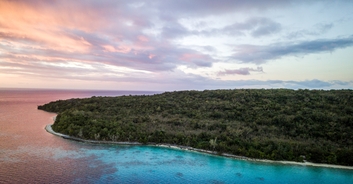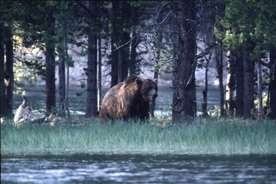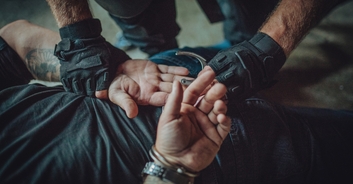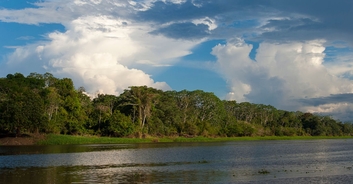Living in the world we exist in - surrounded by computers, aeroplanes and iPhones - it's hard to believe that anyone has managed to stay completely away from the technological sphere. But, while it might seem crazy, it's true that there are multiple reclusive tribes around the world that have nothing to do with the modern world. This was highlighted recently when remarkable footage was released of one uncontacted indigenous man who has lived alone in an Amazon forest for at least 22 years.
Known as "the indigenous man in the hole", the man in question is believed to be the sole survivor from an isolated tribe, a group of six, five of whom were killed during an attack by farmers in 1995; survivors of other indigenous groups in the region have described how farmers shot at their backs when they fled raids on their village.
Thought to be in his 50s now, the unidentified man survives by sustaining himself on pigs, monkeys and birds caught using a bow and arrow, trapping his prey in hidden holes filled with sharpened staves of wood. He apparently lives in a shelter built deep in the forest, sleeping in a hammock strung over yet another hole in the ground, and has protected his area since the 1990s. It appears he has only ever been caught on film before once; a glimpse of his face filmed in 1998 was shown in the Brazilian documentary Corumbiara.
In the video, he looks to be in excellent health and is seen semi-naked, swinging an axe vigorously as he fells a tree. "He is very well, hunting, maintaining some plantations of papaya, corn," said Altair Algayer, a regional coordinator for the Brazilian government indigenous agency Funai in the Amazon state of Rondônia, who was with the team who filmed the footage from a distance. "He has good health and a good physical shape doing all those exercises."
In addition, Fiona Watson, the research and advocacy director of Survival International, a non-profit group that works to protect indigenous peoples, spoke about the footage, stating that it was "extraordinary", particularly when you consider the fact that the 8,070 hectares of protected forest the man lives in is completely surrounded by ranches and farms. "Funai has a duty to show that he is well and alive," she said. "The crucial thing is Funai has managed to keep his territory. The fact he is still alive gives you hope. He is the ultimate symbol, if you like."
The man was first located by Funai in 1996 and the group have been monitoring him ever since. Although they have a policy of avoiding contact with isolated groups, in an attempt to help him, the Brazilian government indigenous agency reportedly left axes, machetes and seeds traditionally planted by indigenous people for the man to find, however, have claimed that he wants nothing to do with mainstream society. "I understand his decision," said regional coordinator Algayer. "It is his sign of resistance, and a little repudiation, hate, knowing the story he went through."
At the moment, Funai specialists think that there are 113 uncontacted tribes living in the Brazilian Amazon - 27 groups have been confirmed so far - and one tribe living outside. In addition, there are 15 uncontacted tribes in Peru, Watson, as well as others in Bolivia, Ecuador and Colombia.





